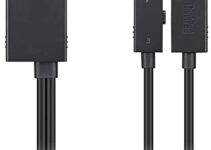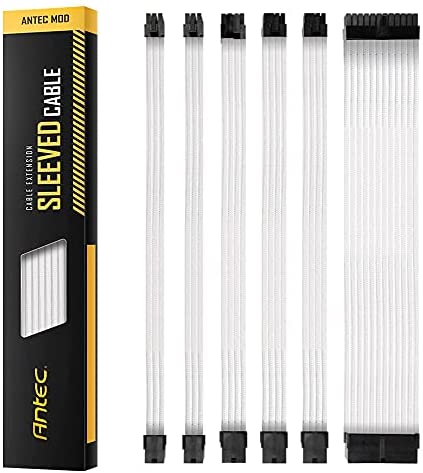Is cable or fiber internet better?
Your home internet options could certainly be worse if you’re choosing between fiber or cable internet. Both technologies are at the top when it comes to speed, plan variety and overall value, but fiber will have the advantage more often than not.
Of the two internet connection types, fiber is the superior technology. Fiber-optic lines can deliver faster download and upload speeds with greater reliability and less vulnerability to network congestion than coaxial cables.
Now, let’s consider not just the technology but also the internet providers that use these technologies. Cable may be more favorable, particularly regarding introductory pricing and internet bundle options.
In this comparison of cable versus fiber internet, we’ll take a look at how the technologies stack up and what you can generally expect from the providers.
Cable vs. fiber quick comparison
| Internet type | Connection | Starting monthly price | Download speed range | Upload speed range | Nationwide availability |
|---|---|---|---|---|---|
| Cable | Coaxial cable | $15-$120 | 100-2,000Mbps | 10-200Mbps | 82% |
| Fiber | Fiber-optic cable | $20-$900 | 100-50,000Mbps | 100-50,000Mbps | 43% |
Show more (0 item)
Cable internet pros
- Availability: Approximately 82% of US households are serviceable for broadband speeds of 100 megabits per second down and 20Mbps up.
- Low cost: Cable providers may have the cheapest introductory rates on home internet.
- Versatility: Cable modems can typically be set up anywhere in the home, which may allow for a better Wi-Fi connection.
Cable internet cons
- Speeds: Cable internet doesn’t match the download speed potential of fiber, and upload speeds are significantly slower.
- Network congestion: Peak usage times can result in slower speeds to the home.
- Fine print: This is provider-specific, but with cable internet, you’re more likely to encounter price hikes, data caps, equipment fees and contracts.
Fiber internet pros
- Speeds: Fiber is the fastest internet connection type, and upload speeds can match download speeds.
- Reliability: Fiber-optic lines are less susceptible to network congestion and interference.
- Value: Compared to cable, fiber plans often have a lower cost per Mbps, along with fewer fees and price hikes.
Fiber internet cons
- Availability: Less than half of US residences are serviceable for fiber internet, according to recent FCC data.
- Pricing: Fiber internet may have a higher starting price than cable internet.
- Bundling: Few fiber providers also offer TV or other home services, limiting the availability of internet bundles.
What other ways do fiber and cable internet compare? Here’s everything you need to know, starting with how the two technologies work.
Coaxial cables vs. fiber-optic cables
The difference between cable and fiber internet starts with how service reaches your home.
Cable internet uses coaxial cables, the same ones that bring cable TV to your home. These cables consist of a solid or woven copper wire surrounded by insulating and protective sheathings. The cables are an effective means for transmitting various signals, including those for your internet connection, but signal strength and quality can lessen with distance, interference and network congestion.
Fiber internet uses thin glass strands called fiber-optic cables to carry data, such as your internet service, via light signals. The technology can carry greater amounts of data at faster speeds than coaxial cables and is also better equipped to retain signal strength and quality over long distances, like across the ocean.
The downside of fiber-optic cables is that they are more expensive than coaxial cables, and laying new lines is a logistical challenge. As a result, cable internet is far more available than fiber.
Cable vs. fiber internet availability
Fiber availability is growing but is still far behind cable internet.
FCC
You’re nearly twice as likely to be serviceable for cable internet than fiber internet. Cable connections are available to more than 82% of US households whereas fiber coverage lands around 43%, according to the FCC.
Both cable and fiber providers largely operate in urban and suburban areas, but cable often provides more broad and consistent coverage throughout a given location. Fiber availability is limited to select areas in a city, and serviceability may vary from one neighborhood to the next.
My hometown of Charlotte, North Carolina, is a good example. The main local cable provider, Spectrum, is available to 93% of the city’s residential addresses. Two major fiber ISPs, AT&T Fiber and Google Fiber, serve the area, but only around 60% of Charlotte addresses are serviceable for fiber internet.
Top 5 cable internet providers by availability
Top 5 fiber internet providers by availability
If you’re shopping for cable or fiber internet, you may encounter one or more of the providers above. Then again, there are hundreds of regional and hyper-local cable and fiber internet providers across the US. The available providers in your area will play a role in how much your internet costs, what speeds you can get and other service conditions.
Cable vs. fiber plans and pricing
Plan selection and pricing will vary by provider, but cable is commonly the best source of cheap internet, at least for the first year or two of service. Cable providers such as Astound, WOW and Xfinity, for example, have introductory rates as low as $20 a month for download speeds ranging from 150 to 300Mbps.
Fiber internet is available for $20 to $30 a month — Ziply Fiber and Frontier Fiber offer 100Mbps ($20) and 200Mbps ($30) plans, respectively — but, for the most part, expect to pay at least $40 to $50 monthly for service. AT&T Fiber, Quantum Fiber and Verizon Fios are $50 to $55 per month in most locations, while Google Fiber’s cheapest plan starts at $70.
Cheap cable internet plans
| Plan | Starting price | Max download speed | Cost per Mbps | Equipment fee |
|---|---|---|---|---|
| Mediacom Xtream Connect Read full review | $15 | 100Mbps | 15 cents | $14 (optional) |
| Astound Broadband 300 Read full review | $20 | 300Mbps | 7 cents | $15 (optional) |
| Xfinity Connect Read full review | $20 | 150Mbps | 13 cents | $15 (optional) |
| WOW Internet 300 Read full review | $30 | 300Mbps | 10 cents | None |
| Optimum 300 Read full review | $40 | 300Mbps | 13 cents | None |
| Sparklight Connect 100 Read full review | $40 | 100Mbps | 40 cents | $13 (optional) |
| Cox Go Fast Internet | $50 | 100Mbps | 50 cents | $15 (optional) |
| Spectrum Internet Read full review | $50 | 300Mbps | 17 cents | $7 router (optional) |
Show more (3 items)
Source: CNET analysis of provider data.
Cheap fiber internet plans
| Plan | Starting price | Max download speed | Cost per Mbps | Equipment fee |
|---|---|---|---|---|
| Ziply Fiber 100/100 | $20 | 100Mbps | 20 cents | $12 (optional) |
| Frontier Fiber 200 Read full review | $30 | 200Mbps | 15 cents | None |
| Metronet 100 Read full review | $30 | 100Mbps | 30 cents | None |
| Altafiber Fioptics 100 | $35 | 100Mbps | 35 cents | $12 (optional) |
| Kinetic Fiber 300 | $40 | 300Mbps | 13 cents | $11 (optional) |
| Brightspeed Fiber 200 | $50 | 200Mbps | 25 cents | $15 (optional) |
| Quantum Fiber 500 | $50 | 500Mbps | 10 cents | None |
| Verizon Fios 300 Read full review | $50 | 300Mbps | 17 cents | None |
Show more (3 items)
Source: CNET analysis of provider data.
Choosing the cheapest internet plan from a cable or fiber provider often means accepting the slowest speeds. As you get into faster speed tiers — 500Mbps to 1,000Mbps, or 1 gigabit per second — pricing is a bit more evenly matched, although cable may still have the advantage, depending on the provider.
In select areas, Astound, Spectrum, WOW and other cable ISPs have lower introductory pricing on gig service than you’ll find with most fiber providers. Just keep in mind that while cable internet’s low pricing is tempting, it may not last long.
Consider introductory and standard pricing
Cable internet may start out cheaper, but many providers have steep price increases after the first year or two. Depending on the plan you choose, Astound, Mediacom and Xfinity rates can increase by $30 to $50 or more once the introductory pricing expires.
Monthly pricing is a bit more stable with fiber internet. AT&T Fiber has no set price increases after 12 months, Verizon Fios offers a price guarantee of two to four years and Quantum Fiber will lock in your monthly rate for as long as you keep your plan.
When comparing cable and fiber internet providers, be sure to evaluate introductory and standard rates. If you go with cable for the cheaper initial pricing, keep an eye on your bill and be ready to switch internet providers when the promotional pricing period ends.
Cable vs. fiber internet speeds
Like pricing, available speeds will vary by provider, but download speeds will probably be faster with fiber. Upload speeds will definitely be faster.
Most cable and fiber internet providers offer download speeds up to a gig. A few cable ISPs offer speeds higher than a gig — Astound goes up to 1.5Gbps, WOW has a 1.2Gbps plan and Xfinity stretches to 2Gbps in select areas — but a single gig is typically the standard max for cable.
With fiber internet, it’s not uncommon to have a single gig speed tier, plus multi-gigabit plans with speeds of 2Gbps, 5Gbps, 8Gbps or higher available. Ziply Fiber offers the fastest home internet plan I’ve encountered with maximum speeds of 50Gbps, or 50,000Mbps.
Fastest cable internet plans
Show more (3 items)
Source: CNET analysis of provider data.
Fastest fiber internet plans
| Plan | Starting price | Max download speed | Max upload speed |
|---|---|---|---|
| Ziply Fiber 50 Gig | $900 | 50,000Mbps | 50,000Mbps |
| Google Fiber 8 Gig Read full review | $150 | 8,000Mbps | 8,000Mbps |
| Quantum Fiber 8 Gig | $165 | 8,000Mbps | 8,000Mbps |
| AT&T Fiber 5 Gig Read full review | $225 | 5,000Mbps | 5,000Mbps |
| Frontier Fiber 5 Gig Read full review | $130 | 5,000Mbps | 5,000Mbps |
| Metronet 5 Gig Read full review | $110 | 5,000Mbps | 5,000Mbps |
| Verizon Fios 2 Gig Read full review | $110 | 2,300Mbps | 1,500Mbps |
| Kinetic 2 Gig | $100 | 2,000Mbps | 2,000Mbps |
Show more (3 items)
Source: CNET analysis of provider data.
Notice that with cable internet plans, upload speeds are significantly slower than downloads. That’s not necessarily a big deal as upload speeds play less of a role in our internet use (my colleague, Joe Supan, notes that his cable upload speeds are more than enough). Still, it’s something to consider when evaluating cable versus fiber internet services.
Cable vs. fiber additional considerations
Price and speed are the two most important factors when choosing an internet provider, but that’s not all you will want to take into account. Fees and contracts can have an impact on your satisfaction as a customer. Again, these things are more provider-specific than the technology, but I find fiber to be more favorable.
Equipment, data caps and contracts
Equipment rental fees can easily add $10 to $15 to your monthly bill, perhaps more if you have a mesh system with multiple pods. Select cable and fiber providers include equipment rental at no extra cost, but the scale tilts more to fiber.
Astound offers free equipment rental. Xfinity may include free equipment with select plans, in select areas. Spectrum includes a free modem lease, but renting a router for Wi-Fi will add $7 to your monthly internet cost. Cox, Mediacom and others may charge $13 to $15 to rent a gateway router.
In contrast, AT&T Fiber, Frontier Fiber, Google Fiber, Quantum Fiber and Verizon Fios, among others, offer free equipment rental.
The only potential downside to fiber is that you may be limited as to where you can put your router. Most homes wired for fiber have an installed ONT (the fiber version of a modem) that may not be in the best location for a router. My ONT, for instance, is hidden behind a closet panel, so my router unfortunately sits in a coat closet.
As for data caps and contracts, fiber providers are again generally more favorable. Nearly all fiber providers I have come across offer unlimited data and few require a contract. Cable ISPs, on the other hand, are more likely to hold you to a data cap and contract with the threat of speed throttling or added fees.
Customer satisfaction favors fiber
One last provider-specific, cable-to-fiber comparison here, but it is one worth noting as it gives insight to how actual customers feel about their service. In the latest American Customer Satisfaction Index report, major fiber providers scored higher than the big cable ISPs.
All named fiber providers (with the exception of Optimum, which is mostly a cable ISP and is notorious for low customer satisfaction), scored above 70/100. The closest cable providers, Cox and Spectrum, came in at 68/100. Granted, the ACSI categorizes fiber and non-fiber providers separately, but I would assume they are evaluated the same.
Another source we like to use for customer satisfaction data, J.D. Power, paints a similar picture. In its 2023 report, a fiber provider led in all four markets: Verizon (East), Google Fiber (South) and AT&T (North Central, West).
Cable vs. fiber internet recap
Cable internet has its advantages — availability, low introductory pricing, better bundling options — but fiber is the superior connection type. Fiber internet is capable of faster speeds, up and down, and is better suited to consistently deliver those speeds, even during peak usage times. Depending on the available ISPs in your area, fiber may be a bit more expensive, but the overall value can’t be beat.


